Are sunsets better when there’s more pollution?
and did they used to be prettier when we burned more coal?
Welcome to Natural Wonders, where I try to find the answers to such weird questions as How do buzzards know when something has died? and Why do beech trees keep their leaves all winter? and What causes trees to fuse together?
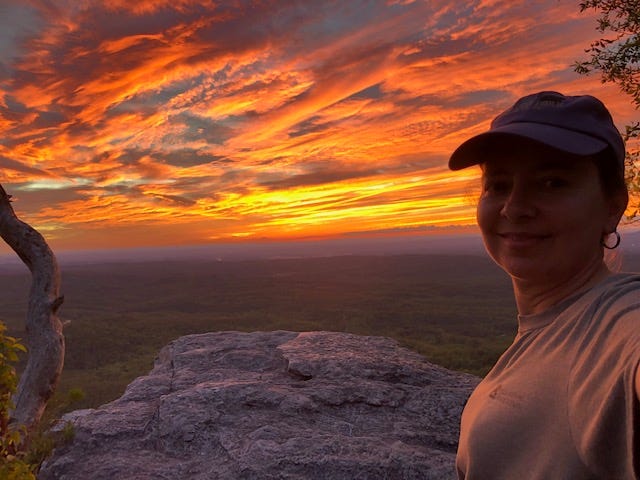
Like most people, I’m a sucker for sunsets. There’s just something about the unpredictability of their arrival, the Easter-egg excitement when you catch a particularly spectacular display, and (for me) the apparent purposelessness of it all in the first place: nature achieves nothing by periodically turning the sky into burning flames, and yet it still happens. Do any animals other than humans appreciate the effect? There’s no way of knowing. But Instagram is proof that humans care a great deal.
A friend told me not too long ago that he’d heard that sunsets used to be even more spectacular than they are nowadays. Pollution during the Industrial Revolution apparently made for gorgeous evening skies.
It’s an interesting thought. Back when Sherlock Holmes roamed the streets of London, smog from the constant burning of coal turned day into night. While ethereal figures emerged from the fog and committed unspeakable murders, were there also stunning sunsets overhead that turned the skies blood-red?
It makes intuitive sense, so I decided to do some research, Sherlock-style…
Does pollution make sunsets even prettier?
First of all, how do sunsets even work? The colors we see in the sky are a result of light bouncing off molecules in the air. On a clear day, the air is filled with mostly nitrogen and oxygen molecules that act like tiny mirrors scattering light. As sunlight passes through our atmosphere, colors with shorter wavelengths (the darker end of the ROY G BIV spectrum) are scattered the most, making the sky appear blue to our human eyes:
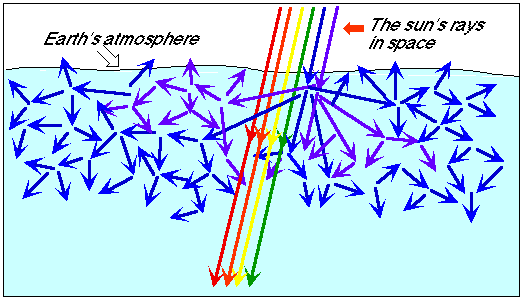
Fascinating fact: the violet end of the spectrum, being the shortest wavelength, is scattered the most, meaning the sky is actually a deep violet color – however, the cones in our eyes aren’t as sensitive to this purplish hue and thus we see the sky as blue. Take a look outside right now – that blue sky is a trick of your eyes!
Sunsets (and also sunrises, it goes without saying) occur in reds, oranges, and yellows (the lighter end of the ROY G BIV spectrum) because by the time the sun is on the horizon, light has to travel a farther distance through the atmosphere than it does when it’s directly overhead. Most of the shorter wavelengths, the blues/indigos/greens, have been scattered out of the light beams leaving the reds and oranges to reach our eyes in the lengthened atmosphere.

Red skies result from aerosols - solid or liquid particles - floating in the atmosphere. These can be moisture in clouds, smoke from forest fires, ash from volcanic eruptions, or dust from sandstorms, all natural aerosols. When the setting sun bounces off these clouds of moisture or dust, it often creates amazing displays.
After the 1883 eruption of Krakatoa, the second largest volcanic eruption to ever happen on earth, massive dust clouds drifted around the world and painted the sky deep red. It is said that the Krakatoa eruption was part of the inspiration for Edvard Munch’s painting “The Scream.”
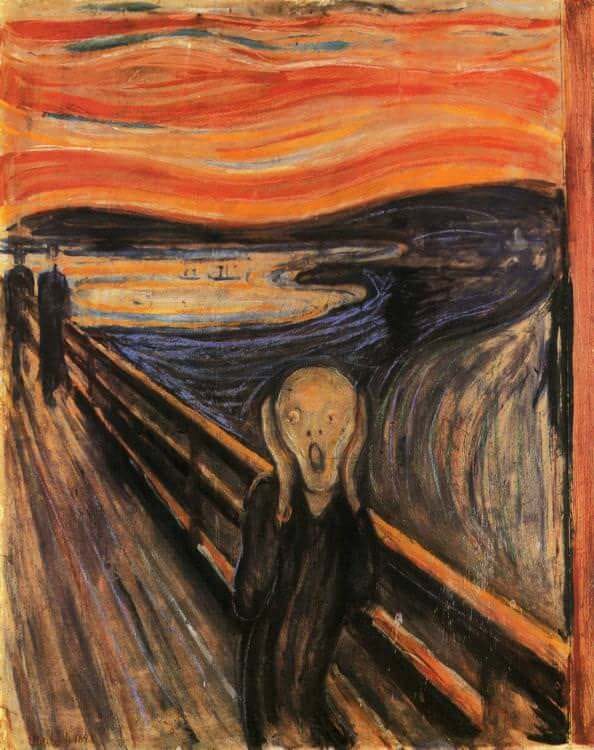
Of course, humans generate aerosols in our atmosphere as well, mainly soot from our internal combustion engines that create smog. These particles can scatter light the same way that natural aerosols do. However, if the air becomes saturated with too many aerosols, or the particles become larger than the wavelengths of visible light, all light is scattered and the sky appears washed out or overly bright.
I had a friend in graduate school who lived his youngest years in Beijing, China. When he was six years old, he moved to America and when he stepped off the plane in California he saw blue sky overhead for the first time in his life.
Smog contains so many particles that all light on the ROY G BIV spectrum scatters, resulting in a hazy, whitish sky. So, I think this answers our question about Sherlock Holmes’ sunset opportunities. In Victorian England, the coal smog would have been too dense to allow for beautiful sunsets. Those of you who watched “The Crown” on Netflix might also remember The Great Smog of London in 1952 that resulted in thousands of deaths and barely breathable air.
Nowadays, London’s air is much cleaner and I know for a fact they have beautiful sunsets there. But across the world, especially in much poorer countries such as Bangladesh, Chad and Pakistan, smog and other forms of air pollution continue to be a major problem.
Needless to say, it turns out excessive air pollution doesn’t have the silver lining of delivering more beautiful sunsets. Here’s to hoping we can have cleaner air and more gorgeous sunsets for all the countries on our planet.
Weird Nature:
Detritus:
Thanks to reader Deanna who alerted me to the current Worm Moon
The Cabot’s Tragopan is a bird that missed its audition for Avatar.
This Tongan underwater volcanic eruption changed the sea floor in “mind-blowing” ways
Ever wonder who’s walking who when it comes to your dog? Well, apparently dolphins are now training humans, so the animal revolution is clearly underway…
An amazing time lapse at the Grand Canyon
If you liked this issue, please click the “like” button below - it makes me happy and also raises the profile of this newsletter!






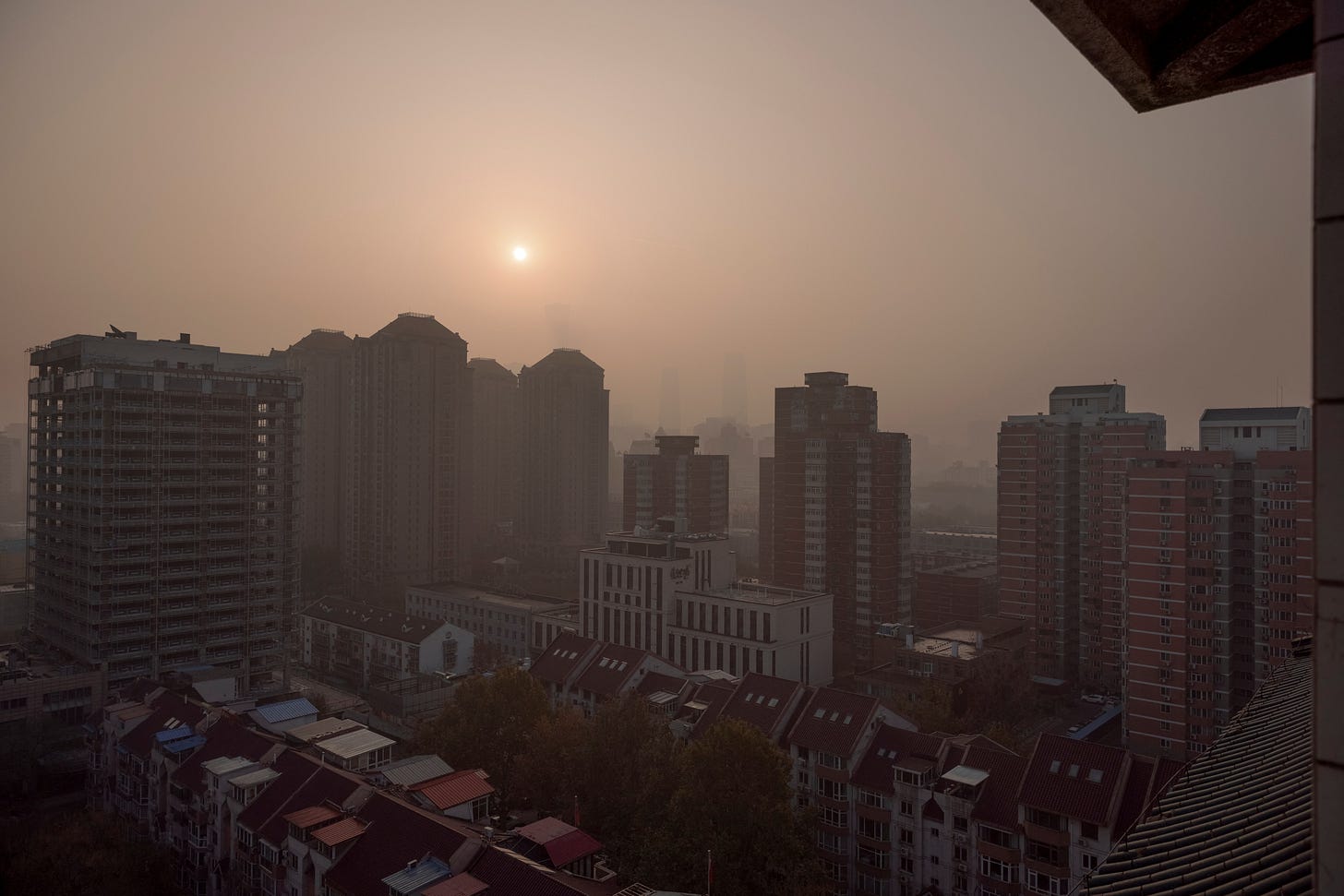

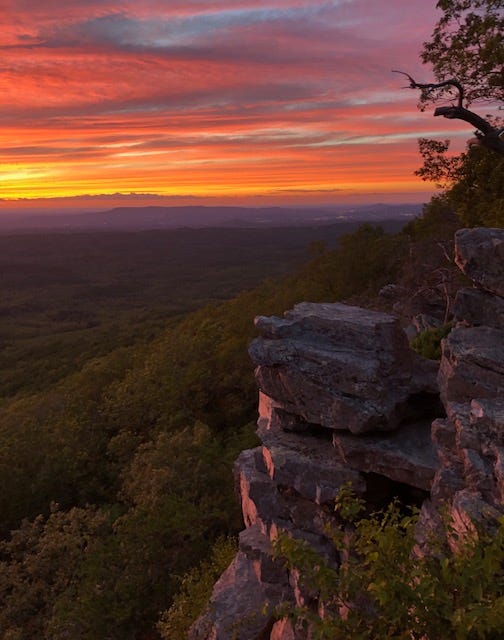
It's fascinating the way that subtle changes in the atmosphere can affect what we see. When Australia had its awful bushfires at the end of 2019, the skies above New Zealand were coloured in all sorts of remarkable ways.
Thanks for clarifying that myth! Forest fire smoke in modest amounts can make a good sunset 🌅 but too much stifles everything in my observation and travels.